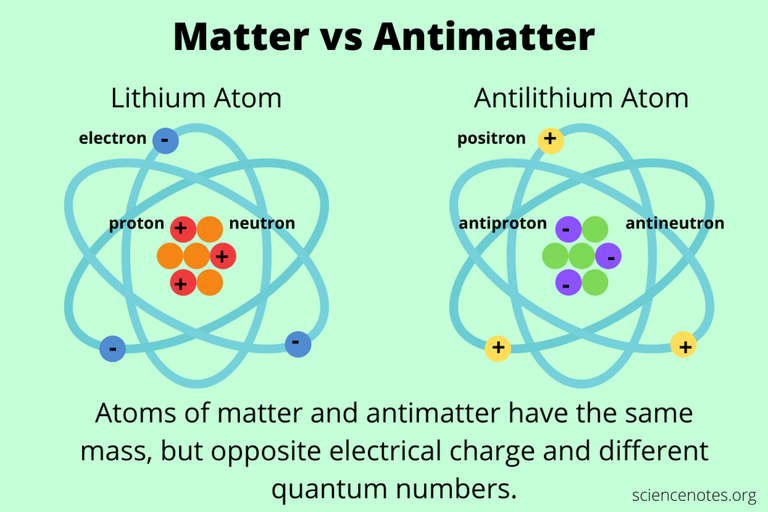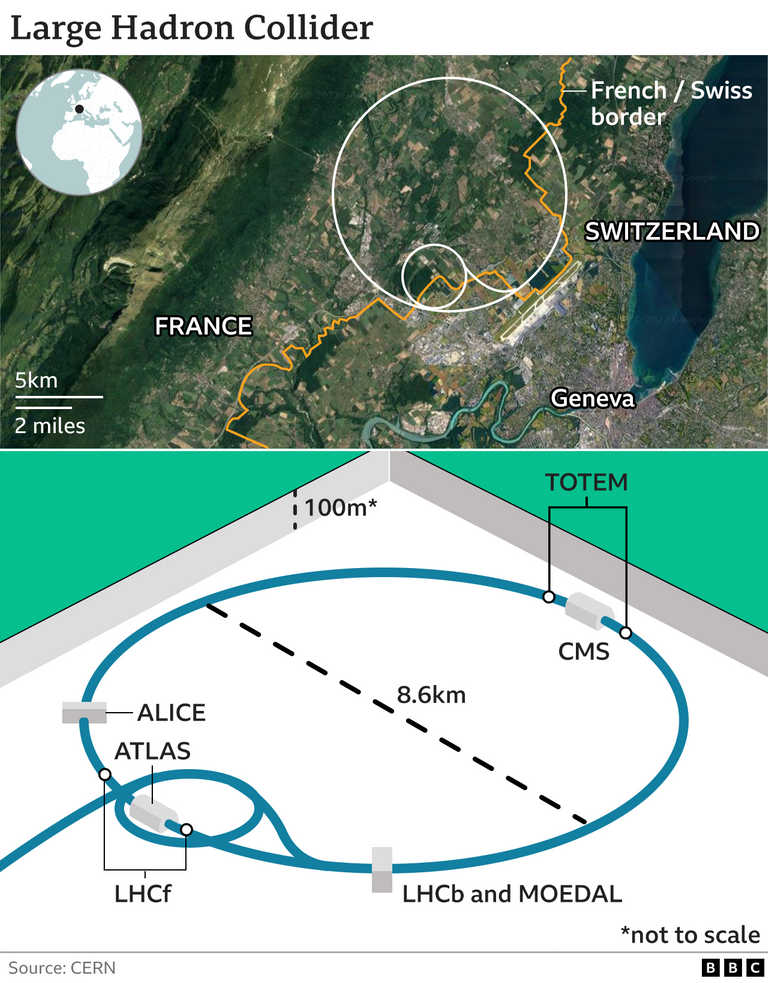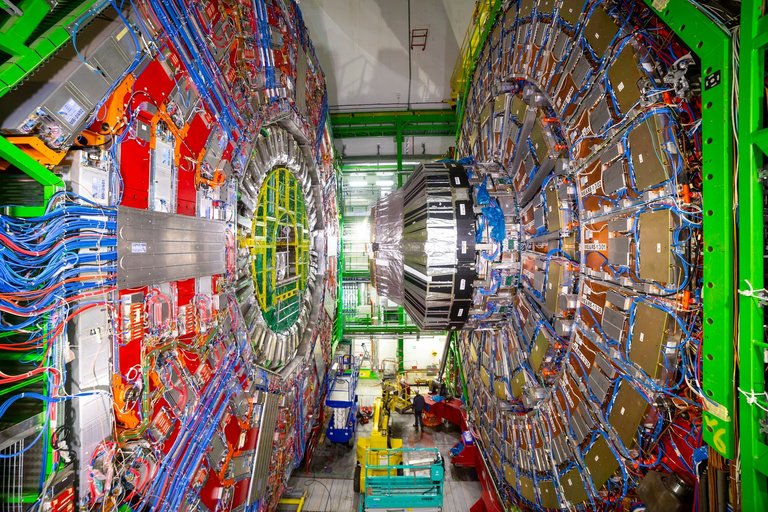Antimatter | Science

Antimatter is like matter but its charge is opposite to that of matter. That is, the charge of protons is positive but the charge of protons of antimatter is negative. Again the charge of the electron is negative and the charge of the electron of antimatter is positive. Antimatter is an enigma to scientists, many parts of which have been solved so far. Scientists have learned a lot about antimatter from centuries of research. Antimatter is associated with the Big Bang theory of the creation of the universe. So antimatter cannot be ignored. With a clear understanding of antimatter, scientists will be able to learn many new things about the universe. They will be able to unravel the mysteries of creation and solve many scientific problems
Discovery of antimatter
Paul Adrien Maurice Dirac was an English theoretical physicist who realized that his relativistic version of the Schrodinger wave equation for electrons predicted the possibility of antielectrons. Carl David Anderson was an American physicist who first discovered antimatter. It was the opposite charge of the electron i.e. positive. He named these antielectrons positrons. It was the year 1932. This year David Anderson won the Nobel prize for his work.
What role does antimatter play in the creation of the universe?
The Big Bang Theory suggests that antimatter and matter were scattered throughout the universe when the Big Bang occurred. But matter comes into contact with antimatter and annihilates. The matter we see in the universe remains because matter was little more than antimatter. Our universe survives on this matter. If matter and antimatter were equal then the universe would have collapsed after the Big Bang. Surprisingly, matter was one part per billion more than antimatter.
What happens when antimatter and matter come into contact ?
Anti matter is the opposite of matter. For example -2 is the opposite of 2. If we add these two numbers we get 2-2=0. That is, when matter and antimatter come into contact, it annihilates. Antimatter is made up of elementary particles like electron , neutrons, proton. An antimatter and a matter have the same mass . They come in contact with each other and destroy each other and produce a lot of energy according to Einstein's law.
Does antimatter exist in the current universe?
Some scientists believe that antimatter exists in the current universe and that when the universe ends its life, the universe will be destroyed in a collision between antimatter and matter. Example 2 and - 2. Now if these two numbers are added the result will be zero. That is, the destruction of the universe. But scientists also think that if antimatter existed in the universe, it would have come into contact with matter in massive collisions that would have produced large flashes of light. As a result, it was understood that antimatter exists. But this is not happening or could not be observed. So antimatter does not exist in the present universe.
Can antimatter be used as fuel?
We know that a small amount of mass is converted into energy from nuclear fusion reactions. As a result of this, the amount of energy that is available is much. When antimatter collides with matter, the entire mass is converted into energy. As a result, a large amount of energy is produced. We know that according to Einstein's formula E = mc'2 One gram of mass can produce 90000000000000 J of energy. That is, if we have enough antimatter, there is no tension for fuel. This energy can generate huge amounts of electricity. It would be the ideal fuel for space travel. Humans will be able to achieve 50% of the speed of light. But unfortunately there is no such antimatter in the world and the cost of producing antimatter is very high.
Is it possible to create antimatter? If possible, where is antimatter produced?

Yes the creation of antimatter is possible. CERN can produce antimatter . CERN is The European Organization for Nuclear Research. CERN can produce antimatter. LHC is a device that accelerates particles at nearly the speed of light. The Large Hadron Collider (LHC) is the most powerful particle accelerator ever built. The accelerator sits in a tunnel 100 metres underground at CERN, the European Organization for Nuclear Research, on the Franco-Swiss border near Geneva, Switzerland. At the LHC device, high-speed particles collide. These collisions result in antimatter. The LHC can produce 100 trillion antiprotons per year. The mass of which is very little that is 1 billionth of a gram per year. This is why antimatter is the most expensive substance . Scientists need to think more about how to produce antimatter. There is currently no technology capable of producing sufficient quantities of antimatter. So we cannot take advantage of antimatter. However, CERN is playing an important role in antimatter research

Research on created antimatter
CERN has created an anti-hydrogen atom. Physicists at CERN announced this in 1995. They were also able to store antihydrogen. An antihydrogen would be destroyed on contact with matter so they created a trap. On the scale of atomic lifetimes, this was a very long time — long enough to begin to study their properties in detail. By precise comparisons of hydrogen and antihydrogen, several experimental groups hope to study the properties of antihydrogen and see if it has the same spectral lines as hydrogen. One group, AGIS, will even attempt to measure g, the gravitational acceleration constant, as experienced by antihydrogen atoms.
Scientists are finding the existence of antimatter in the universe. If antimatter exists, they will surely find it. One such scientist is Steigman who is observing bullet clusters. He said that
I'm looking to see if there could be any clusters of galaxies which are made of large amounts of antimatter.
He is observing bigger conflicts. If the existence of antimatter is discovered, then what happened in the early stages of the universe will be known. At the same time, we will get an idea about how the universe will be destroyed. Humans still have many questions about antimatter. Hopefully, scientists will provide more information that can further explain antimatter.
Source
This post has been written by collecting data from the following sources
Thanks for reading
Best regards

Thanks for your contribution to the STEMsocial community. Feel free to join us on discord to get to know the rest of us!
Please consider delegating to the @stemsocial account (85% of the curation rewards are returned).
Thanks for including @stemsocial as a beneficiary, which gives you stronger support.